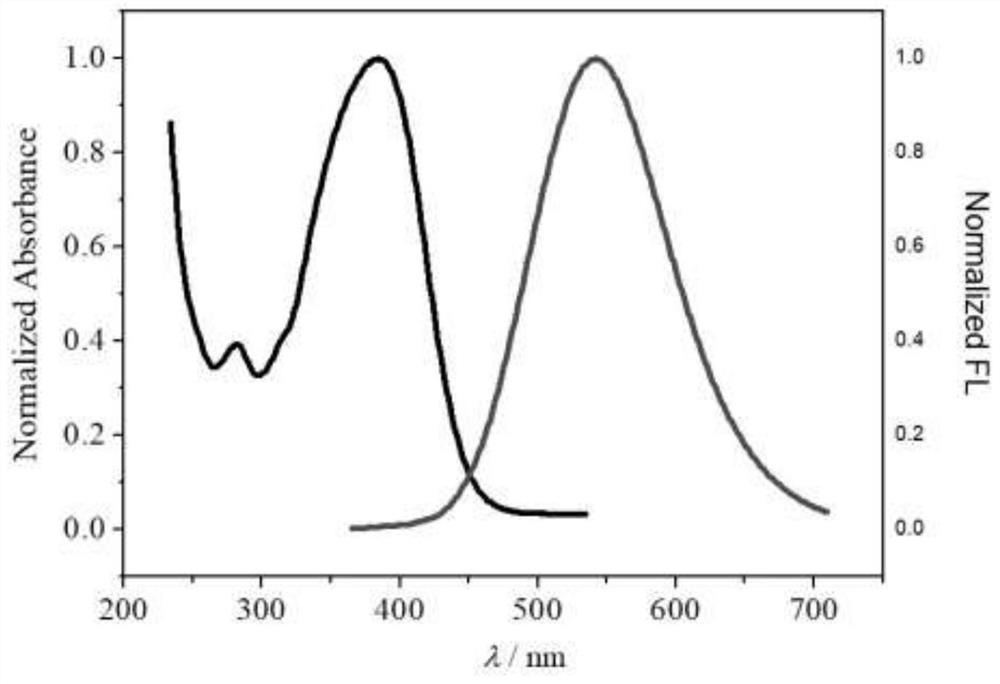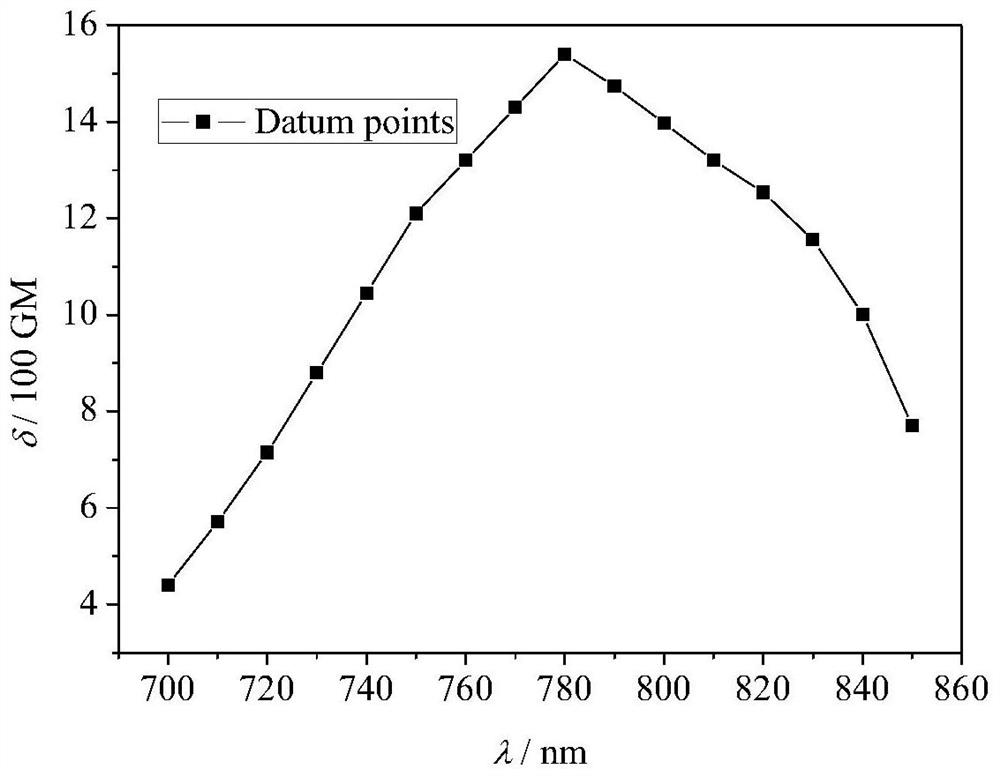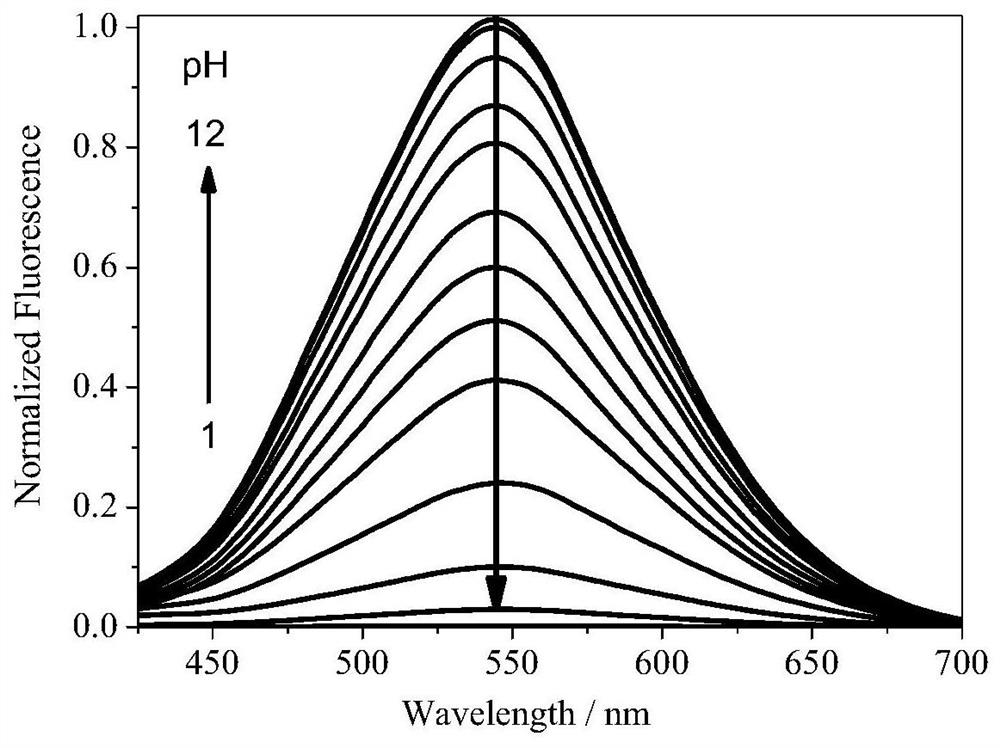Preparation method of a two-photon fluorescent pH probe and its application in cell imaging
A two-photon fluorescence and cell technology, which is applied in the field of preparation of two-photon fluorescence pH probes, to achieve the effects of improved clarity, high detection sensitivity, and good cell permeability
- Summary
- Abstract
- Description
- Claims
- Application Information
AI Technical Summary
Problems solved by technology
Method used
Image
Examples
Embodiment 1
[0041] Embodiment 1 Molecular structure and synthetic route
[0042] A two-photon fluorescent labeling probe D1 has the following molecular structure:
[0043]
[0044] The synthetic route is:
[0045]
[0046] Wherein, intermediates 2, 3, 4, 5, and 6 were all synthesized according to the following documents:
[0047] [1] H. Huang, Q. He, H. Lin, F. Bai, Z. Sun and Q. Li, Polym. Adv. Technol., 2004, 15 (): 84—88
[0048] [2] Huang C., Fan J., Peng X., Lin Z., Guo B., Ren A., Cui J., Sun S., J. Photochem. Photobio. A: Chem., 2008, 199 (2) –3):144—149
Embodiment 2
[0049] The preparation of embodiment 2 intermediate 7,8 and target compound D1
[0050] Preparation method: (1) Synthesize intermediates 2, 3, 4, 5 and 6 according to conventional methods;
[0051] (2) Synthesis of Intermediate 7: Accurately weigh carbazole (5g, 30mmol) and potassium hydroxide (3g, 53.6mmol) into a 100mL dry single-necked flask filled with 30mL DMSO, and accurately measure 4mL with a pipette 1-Bromooctane is placed in a constant pressure dropping funnel, and a constant pressure dropping funnel is installed on the flask; the flask is placed in an oil bath at 80-85°C, and 1-bromooctane is dripped under stirring, and reacted for 3 hours. After cooling, add 100mL of distilled water and mix; after standing still, a light yellow solid precipitates out, filter and dry; recrystallize with absolute ethanol to obtain white needle-like crystals, the yield is 68% (5.7g), and the melting point is 68-70°C;
[0052] 1 H NMR (CDCl 3 ,400MHz)δ:8.074(d,J=7.6Hz,2H),7.428(t,J ...
Embodiment 3
[0057] The performance research of embodiment 3 probe D1
[0058] The photophysical properties of probe D1 are shown in Table 1 below.
[0059] Table 1 Photophysical properties of D1
[0060]
[0061] Note: a) Maximum single-photon absorption wavelength (nm); b) Maximum single-photon emission wavelength (nm); c) Fluorescence quantum yield; d) Maximum two-photon excitation wavelength (nm); e) Stokes shift ( nm); f) Maximum two-photon absorption cross section (GM).
[0062] As in Table 1, attached Figure 1-2 As shown, D1 has a rather large two-photon absorption cross-section (δ), at CH 2 Cl 2 with H 2 The δ in O is as high as 3000 and 1540GM, respectively.
[0063] combined with image 3 It can be seen that the fluorescence intensity of probe D1 increases as the pH of the solution increases, and when the pH of the solution is close to 9, the fluorescence intensity hardly increases.
[0064] according to Figure 5 It can be seen that the Sigmoidal fitting curve of th...
PUM
 Login to View More
Login to View More Abstract
Description
Claims
Application Information
 Login to View More
Login to View More - R&D
- Intellectual Property
- Life Sciences
- Materials
- Tech Scout
- Unparalleled Data Quality
- Higher Quality Content
- 60% Fewer Hallucinations
Browse by: Latest US Patents, China's latest patents, Technical Efficacy Thesaurus, Application Domain, Technology Topic, Popular Technical Reports.
© 2025 PatSnap. All rights reserved.Legal|Privacy policy|Modern Slavery Act Transparency Statement|Sitemap|About US| Contact US: help@patsnap.com



